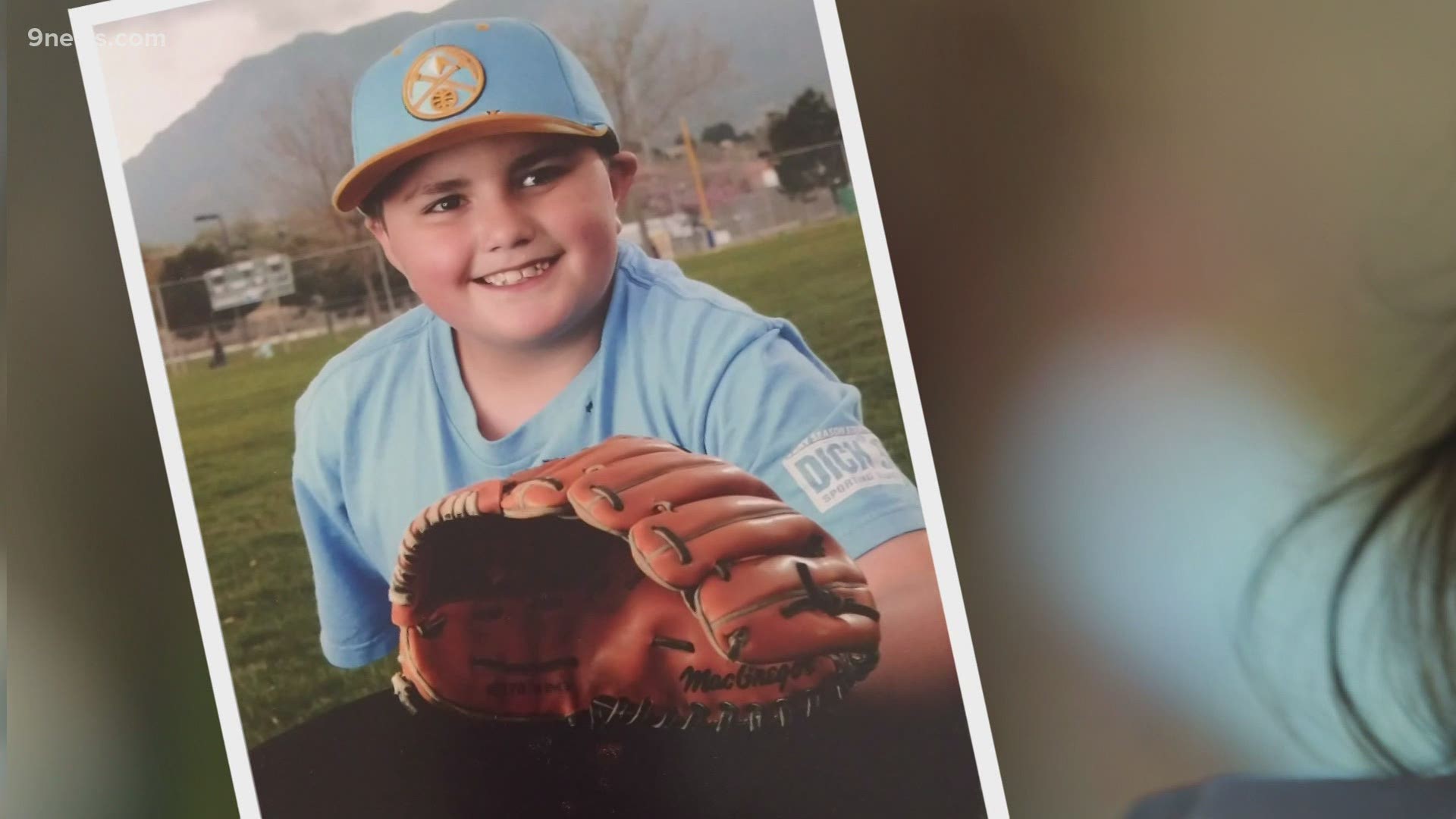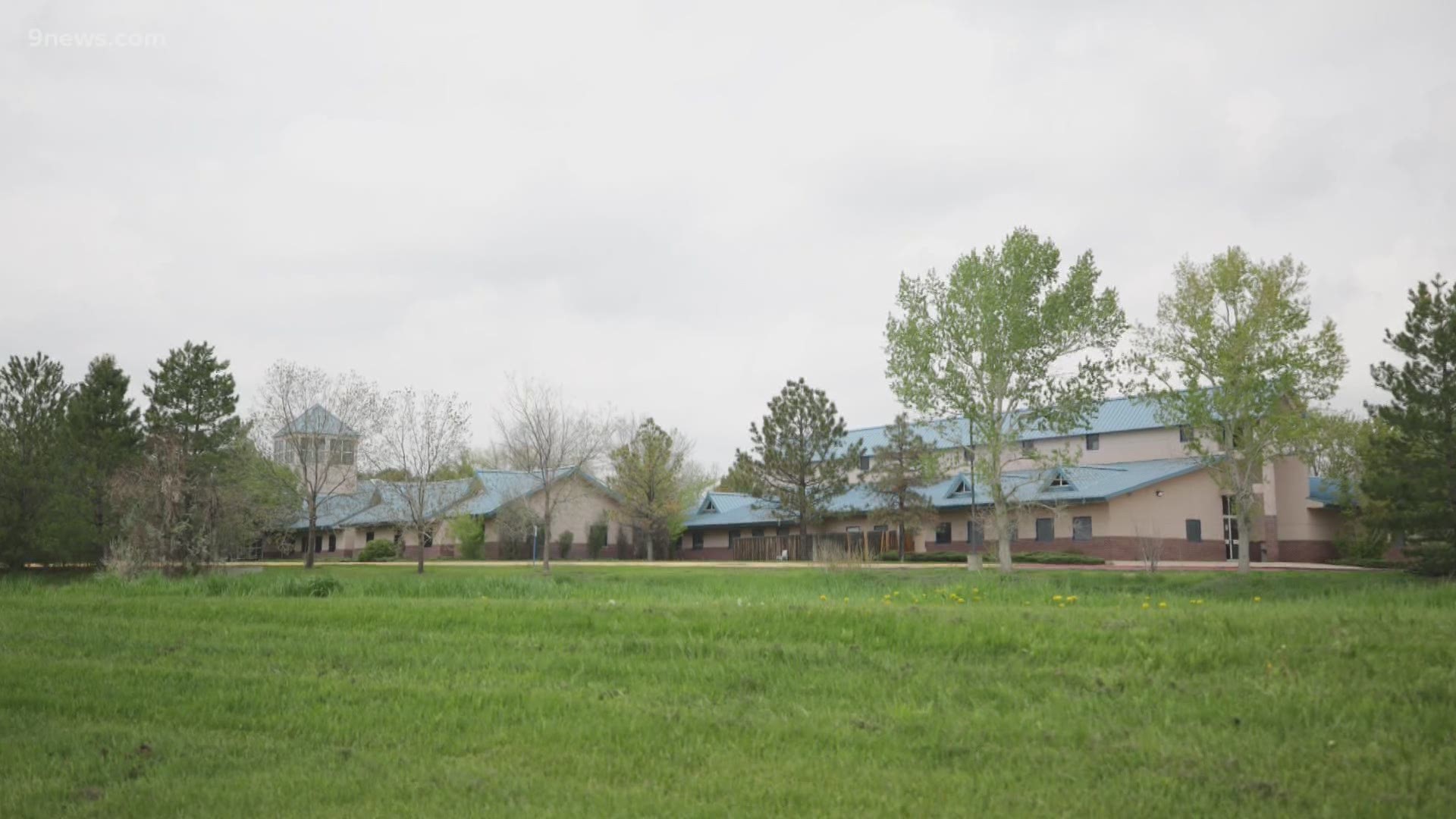DENVER — In the places of last resort for Colorado’s most troubled kids, the doors are not locked.
And the children run.
They scale fences and slip through gates. They bolt from staff, who are not allowed to block or restrain them, and they roam city streets for hours or sometimes days.
Children and teens run away from residential treatment centers in Colorado so often that local police departments have grown exasperated by the frequent calls to search for them, and the consequences have been deadly, an investigation by The Colorado Sun and 9NEWS has found.
Two boys, ages 12 and 15, were killed in separate incidents with eerily similar details — both were struck by cars late at night after running away from different residential treatment centers, two years apart.
RELATED: Child advocates talk ideas after a Denver child went missing for 7 months and was then found dead
Their deaths and the escalating runaway problem at some residential child care facilities have advocates raising questions about whether years of inadequate funding have made the centers dangerous. They also wonder whether Colorado should reexamine laws forbidding centers from locking their doors or using physical force to prevent children from running away.
Some child health experts say the children’s mental health system is inadequate, allowing problems to spiral to the point of needing a 24/7 treatment center. By the time kids arrive in residential care, their issues are so acute that breakthroughs are elusive. Children who wind up in residential centers are traumatized by past abuse and neglect and have behavior problems so out of control they’re no longer safe living with families.
By then, these kids live in fight-or-flight mode. And they run.
“Runaway behavior really puts children in peril,” Colorado Child Protection Ombudsman Stephanie Villafuerte said. “We see children being sold into sex trafficking. We see children that have been harmed in accidents. We see kids who have been killed.”
In some cases, kids placed in Colorado’s 52 state-licensed residential centers run away and never return. More than 200 children and teens exited the foster care system in Colorado in the past three years by running away.
Their child welfare cases were closed. They were lost.
Editor’s note: This is the first in a joint Colorado Sun/9NEWS series examining residential treatment centers where Colorado houses foster youth and kids with severe behavioral issues. See more from The Colorado Sun by signing up for The Sunriser newsletter.
Timmy was struck on a dark road a few hours after running
Elizabeth Montoya’s son was dying for nearly 24 hours before she even knew.
Timmy Montoya-Kloepfel, who had autism and severe depression, had been at Tennyson Center for Children in northwest Denver for less than a week. Montoya sent him there with hope that round-the-clock supervision and treatment for his mental health struggles would help make him better. Instead, he was killed.
Timmy, 12, ran away from Tennyson on June 21, according to police records. He had run away many times before, and each time Timmy would borrow a cell phone or ask someone to call the police so he could find his way back home, or to one of the residential treatment centers where he had lived in the last year of his short life.
But that night, he never called. Timmy was struck by a Chevy Tahoe about 9:20 p.m. on a dark stretch of Interstate 70 Frontage Road in Wheat Ridge with such force that he was flung out of one of his black Nikes, according to a police report. He was taken to a hospital with a fractured skull, two broken legs and a ruptured spleen.


But authorities did not know who he was because he had no ID and no cell phone. Police didn’t realize he was missing from Tennyson Center until the next day.
The driver of the Tahoe told police he saw Timmy trying to get up from where he was lying in the road and slammed on his brakes. The man was so distraught that he couldn’t tell the 911 operator his location and flagged down another vehicle for help, according to the police report.
Montoya, at home in Colorado Springs, knew Timmy was missing and prayed that he would turn up as he had all those times before. She tried to get some sleep. The next day she dropped to her knees and said, “God, I need something from you,” she recalled.
“Immediately, the 23rd Psalm came to mind,” Montoya said. It wasn’t the one she wanted ringing in her ears. “Yea, though I walk through the valley of the shadow of death, I will fear no evil.” Montoya, wracked with fear, kept picturing her son lying beside a road, battered. But in her vision, he had been beaten up, not hit by a car.
It wasn’t until 11:30 p.m. on June 22 — about 26 hours after her son was struck — that Colorado Springs police knocked on Montoya’s door, according to public documents on the case. Timmy, they told her, was clinging to life in a Denver hospital bed. They showed her a photo on a cell phone and asked if it was her son. His hair was shaved and there were tubes covering up his face, Montoya said.
She chose not to believe it was Timmy.
Still, Montoya rushed north to the hospital. “And when I walked into the room,” she said, tears rolling down her face as she recalled that night, “I can’t even tell you. I just thought … that very minute, like I would give my whole life. If I have to stay by his side and feed him, I would give up my whole life for him.”
For the rest of his life, she sat beside him. Timmy died June 23.


“That’s your job. Quit calling us!”
Tensions between local police departments and residential child care centers have boiled over.
The Denver Police Department was called to Tennyson Center for Children 357 times in 2020. In the past three years, the center contacted police 938 times, one-third of the time to report a runaway, according to police logs requested by The Sun/9NEWS.
Denver police were called to Mount Saint Vincent treatment center, also in the northwest part of the city, about twice per week on average in 2019 and 2020, so often that officers began meeting with leaders of the children’s home in late 2019 to discuss the drain on their time. The department told Mount Saint Vincent that police were not a “taxi service” to bring back runaways and that, going forward, officers would respond only if someone was in imminent danger.
But the calls continued, and on Jan. 5, 2020, an aggravated police officer responding to the center’s fourth call of the morning grabbed a kid by the arms and called children who had run from the campus in northwest Denver “animals” and “turds,” according to body camera footage and an internal affairs report obtained by The Sun/9NEWS.
At 7 a.m. that day, kids were carrying glass from broken windows and running in the street, the center reported to Denver police. At 7:43 a.m., the home told police kids were trying to get hit by cars. The third call of the morning concerned children who had left campus and were fighting on a street corner.
By the fourth call, at 9:22 a.m., Sgt. Eric Lee was clearly irritated, as evidenced by audio footage captured by his body camera as he pulled off the street near a group of runaways and staff who were following them.
“You guys, grab these kids and take them back!” the officer shouted, as the kids who had run away from the campus tried to climb into his car. “That’s your job. Quit calling us!”
When an employee tried to tell him that she was not allowed to physically grab the children and force them back into the building, he responded, “If you’re telling me you’re ill-equipped to care for these children, then you need to be shut down by the state. You’re just going to watch them? That’s your plan?”
Then, as a runaway girl was trying to bite a staff member in the face, Lee grabbed both of the girl’s arms and she fell to the ground, according to footage of the incident. Lee pulled the girl off the ground by one arm and started walking her down the street.
“This is ridiculous,” Lee, who was later disciplined for conduct unbecoming of an officer, said to Mount Saint Vincent staff. “Four times you call us today? Four times?”
Mount Saint Vincent officials said they call Denver police only as a last resort and that the center’s policy is to “run alongside” runaways to make sure they are safe.
“The typical child being cared for at our residential program has been unsuccessful in five previous out-of-home placements,” the center said in an emailed statement. “These children have been victimized in unspeakable ways and often behave in ways that reflect their life experience, which sometimes results in them fighting or fleeing from people, events or circumstances.”

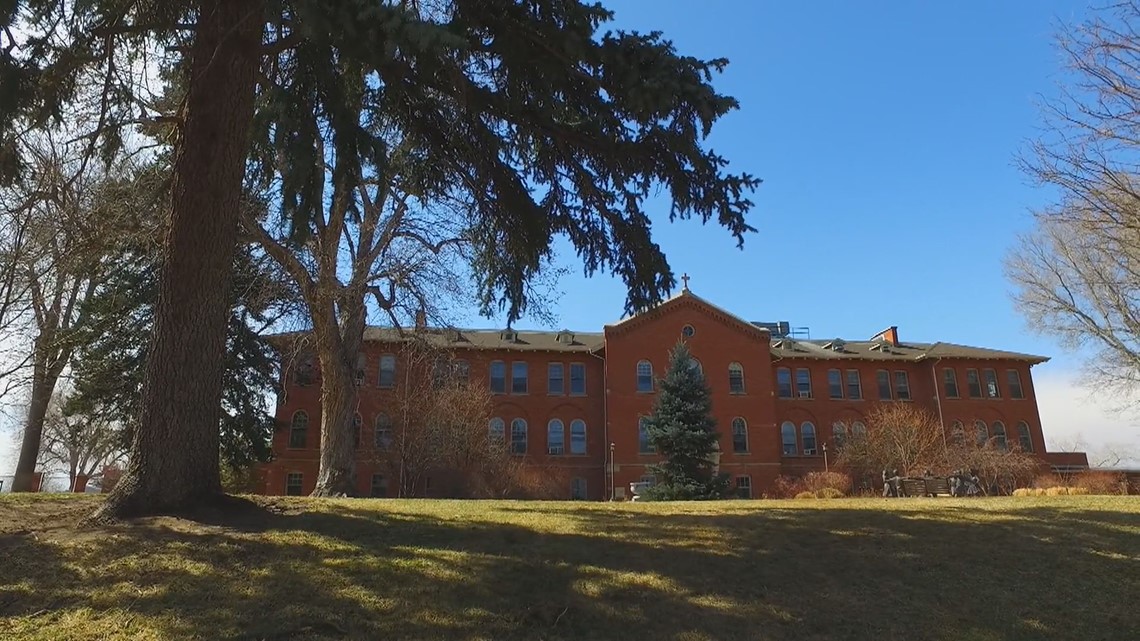
Also in 2020, Denver Police were struggling with high numbers of calls from Tennyson Center.
Lt. Daryl Miller wrote to Tennyson in May of last year noting that the department had reached a “tipping point” in calls to the campus, according to emails The Sun/9News obtained through the Colorado Open Records Act. Officers went to the center eight times the day before Miller sent the email asking for a meeting.
Denver police tallied that they had spent 875 hours, the equivalent of 36 days, responding to calls regarding Tennyson from March to mid-July of last year. About 100 calls during that time came from citizens.
The high call volume continued into 2021. Denver police grew so concerned about “insufficient supervision” at Tennyson Center for Children that Sgt. Brian Cotter, with the department’s missing persons unit, alerted Denver child welfare officials. In an email obtained by The Sun/9News, Cotter noted that police had held meetings with the center but “improvements do not seem to be happening.”
Staff at the center were not able to “prevent children from causing problems in the neighborhood,” he wrote in the Jan. 7 email.
Tennyson, under threat of licensing action by the state, decided in February to shut down its residential program, though it remains open for daytime school and treatment.
In Westminster, a residential treatment center named Devereux Cleo Wallace is regularly the address with the highest number of police reports in the entire Denver suburb.
Police have worked in recent years to bring down the volume of calls pouring in from the facility, Westminster Police Commander Tim Read said. After 2018, when the youth home called police 714 times, including 278 times to report runaways, the police department talked with staff about the center’s “business model,” Read said.
“One of the conversation points was, ‘We can’t be your staffing line, right? We can’t be your business model, so let’s talk this through. How do we change that?’” Read recalled. “That’s where we had to have those hard conversations and say, we can’t be your auxiliary support, right? You have to be able to manage.”
Cleo Wallace staff stopped calling police as often and instead attempted to follow runway youth and encourage them to return to the facility, Read said. Officers want to help the young people the department calls “Cleo kids,” but officers are often too busy with actual crimes, he said.
Officers walked through the campus a few years ago and pointed out environmental changes that would cut down on runaways or kids climbing up on the roof, suggesting changes in the fence, spikes and shrub trimming, Read said. There was discussion of putting up a higher fence, but the bid for the job came back at $800,000, Read said.
Calls to police decreased dramatically in 2020. But this spring, reports are climbing again. Westminster police received 62 contacts from Cleo Wallace just in April, Read said.
“I know that that’s going to be the highest call volume of any location in the city,” he said.
Leah Yaw, a senior vice president for Devereux Advanced Behavioral Health, which operates Cleo Wallace, said the uptick in calls this spring was due to a change in the way the police tally calls and because of two “behaviorally reactive” children.
“Children have rights”
Colorado law says residential child care centers cannot use locks, physical force or blocked doorways to prevent children from leaving. Only in emergency situations, such as a child striking another child, are staff allowed to use physical holds to restrain kids. Grabbing a child by the arm to prevent them from walking out in the street doesn’t count.
“These are not jails,” said Minna Castillo Cohen, director of the state Office of Children, Youth and Families, which licenses and investigates residential centers. “These are homes. These kids have the ability to leave and you cannot prevent their egress and you cannot prevent them from walking away from a facility.”
Children who are at “imminent risk” of harm to themselves or others could go to a higher level of care, such as a locked, psychiatric facility, she said.
The laws that prevent staff from using physical force or blocking children in rooms or buildings are intended to protect kids who have already lived through abuse, including sexual assault, and who have mental health problems or sensory issues and don’t like being touched.
“Children have rights,” Castillo Cohen said. “We’re talking about a kid who may have suffered abuse at the hands of an adult that they trusted. They may be on the autism spectrum and that physical touch may actually exacerbate their movements.”
Becky Miller Updike, who represents residential treatment centers as director of the Colorado Association of Family and Children’s Agencies, said she understands the spirit of the law, but in practice, if kids are running away and getting struck by cars, it’s not working.
Her organization tried to open the “politically charged conversation” about the laws regarding restraint and locked doors, but state officials had no interest in having it, she said. Besides getting hit by cars, there are other tragic outcomes of running away — 60% of all child sex trafficking victims previously have been in the child welfare system, according to the National Foster Youth Institute.
“Kids do have rights. But they also have the right to be kept safe,” said Updike, a former state child protection ombudsman. “If a kid leaves without a phone or money, how are they going to get money?”
Despite the problems, residential centers are necessary, child welfare experts say, especially for kids whose behavioral problems have led to a string of unsuccessful foster-home placements, expulsion from school or destructive behavior that makes living with their families or foster families unmanageable. Many of the youth are depressed, suicidal and need constant supervision. Residential treatment centers provide intensive mental health counseling, as well as art and music therapies.
But since 2007, more than 40 Colorado centers have closed their doors — either because they were shut down by the state or because they couldn’t afford to stay open. Many supplement the state funding they receive, $250-$600 per day per child depending on the severity of the child’s issues, by asking for donations.
There were 365 Colorado foster youth in residential centers at the end of 2020, compared with 1,295 in 2010, according to data from the state Department of Human Services.
The closures come as Colorado shifts its child welfare system to spend more money on child abuse prevention and keeping children with their families, and less on institutional care. At the same time, however, the mental health issues of teens and children in the system have grown more acute.
There aren’t enough beds at residential treatment centers in the state to accommodate the referrals from county child welfare departments trying to place youth with severe behavioral issues, Updike said. A recent survey of the largest centers in the state found that while they had an average of 586 requests per month from counties to place children, centers could provide only 453 beds.
Colorado counties send about 20 children each year to out-of-state facilities.
A mental health hole
In the two years before he died, Timmy was stuck in a loop — home for a few days or weeks, then to psychiatric hospital or a residential treatment center, and repeat. He regularly threatened to take his own life, but his mother never thought he would.
Timmy ate half a tube of toothpaste and warned his mother he might die. He threatened to guzzle rubbing alcohol. He licked a bottle of nail polish and sprayed hairspray in his mouth. He found his brother’s machete and told Montoya, a single mom, she better call someone before he used it.
Montoya lived in a constant state of alert and kept her kitchen knives in a locked box.
“Autistic kids will just do some kind of repetitive motion over and over,” Montoya said. “This was his thing.”

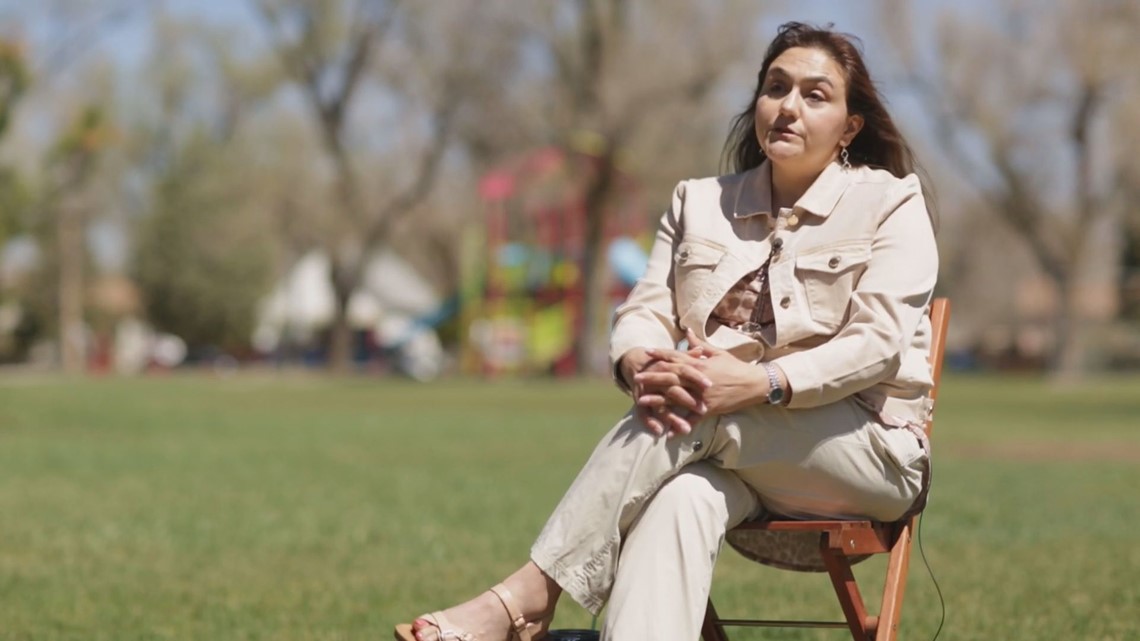
Each time, Montoya took him to a walk-in crisis center. If Timmy didn’t calm down within a few hours, they would place him in residential care. Timmy lived for seven months at Mount Saint Vincent in Denver. There, he managed to climb a 12-foot fence and run away for a few hours, Montoya said, but returned safely.
When Timmy returned to live at home, Montoya was able to enroll him in a state program, called a Medicaid waiver, that was supposed to provide therapy for Timmy while he lived with his mom. It was also supposed to provide Montoya with respite care when she needed a break from making sure he wasn’t trying to hurt himself or run from home.
But no one in the Colorado Springs area offered the services covered under the new state program, Montoya said.
And the loop continued.
Montoya continued bringing her son to the local walk-in crisis center, and when his mental health issues once again became too intense for him to function at home, Timmy went to a residential treatment center. This time, it was Tennyson, and within a week, he ran away and was struck by a car.
Almost a year after Timmy’s death, Montoya still has her son’s baseball caps and skateboards hanging on the wall. She donated his clothes to a family at her church. When memories come to her, she writes them in a journal so they don’t get lost.
Timmy loved fishing and camping and chatted up strangers as a toddler when he and his mom rode the bus together. Montoya said she tried to piece together the help they needed when he began suffering from mental health problems around age 10, but it never managed to make him better. In the end, she said, the system failed her in the worst way possible.

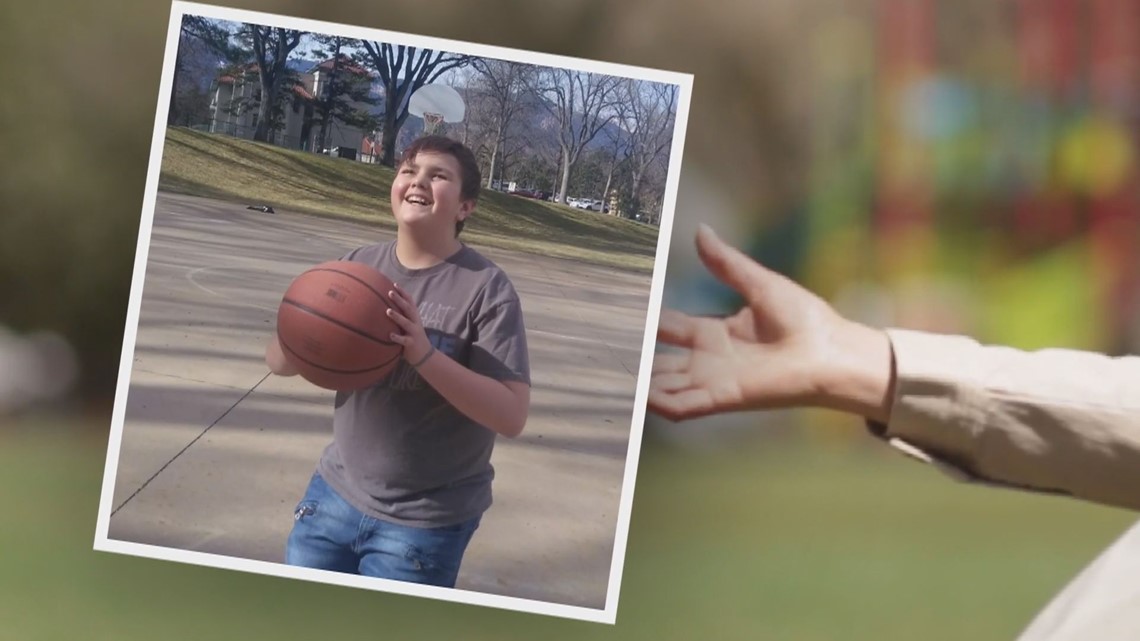
Now, Montoya wants Timmy’s death to force change within the child welfare system and for officials to investigate. She wants them to learn what went wrong and use it to make other children safer. Montoya describes herself today like a statue with a hollow center, she said. “There’s a giant hole in my life.
“Timmy was such a beautiful child and he loved people so much. But he struggled. He struggled with suicide. He struggled with wanting to hurt himself and so many kids these days are going through that same thing, and we have to be aware as adults, whether we’re parents or not.”
Andrew was struck by a drunk driver after running away
What happened to Timmy was a near-identical repeat of the way 15-year-old Andrew Potter died two summers earlier.
Andrew, who had a history of running away, left the campus of Devereux Cleo Wallace in Westminster on Aug. 31, 2018, and was run over by a car on Wadsworth Parkway. He died at the scene, his shoes and cell phone scattered in the road.

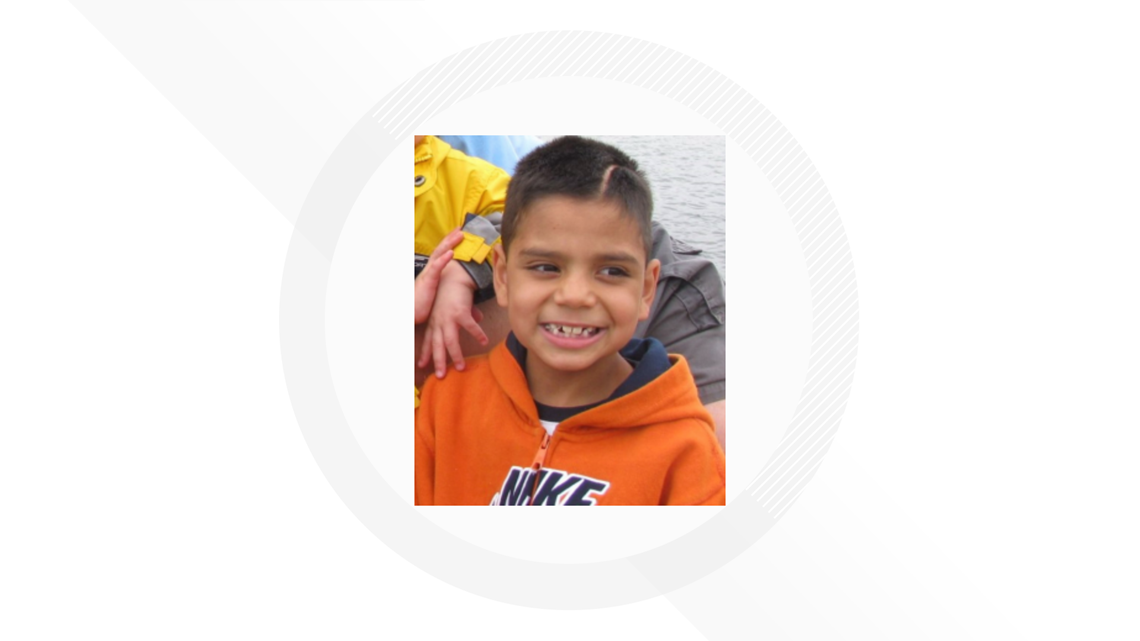
Andrew was struck and killed by a suspected drunk driver just after 11 p.m. The driver, Elliot Bond, fled the scene of the crash, but a witness saw him pull off on a side street. Bond was driving with his head out the window of his Audi because the windshield was so smashed from hitting Andrew that he couldn’t see straight ahead, according to police records.
“Is the guy back there all right?” Bond asked when police caught up with him.
Andrew and two other teenage boys left Cleo Wallace around 6 p.m. that night by hopping over a back fence and weaving through a nearby apartment complex. The facility reported the three boys as runaways about 7:30 p.m., according to police records.
The teens — all of whom had been diagnosed with severe mood disorders — hung out in a Target and a King Soopers before running across Wadsworth in the dark, against the traffic signal. The first two boys made it through the intersection, but Andrew, trailing behind, was struck.
The two other boys ran back to Cleo Wallace because they didn’t want to get in trouble, leaving Andrew in the road, according to the police report.
In a lawsuit filed against Devereux Behavioral Health, the teen’s adoptive parents claim the center failed to adequately supervise their son. When reached by The Sun/9News, the parents said they could not comment on the case while the lawsuit is pending.
Bond, who pleaded guilty to vehicular homicide, was sentenced to five years in community corrections.
Yaw, with Devereux Cleo Wallace, said she could not comment on whether the center changed policy after Andrew’s death because of pending litigation. But she said that in 2018, the same year he died, the center began calling police regarding every runaway instead of the prior protocol of sending a fax. The policy at Cleo Wallace, which currently has 32 children, is to follow runaways on foot or by vehicle, she said.
“A significant red flag”
The runaway problem is pervasive enough across the nation that the U.S. Department of Health and Human Services released a paper in 2020 reviewing protocols for reporting missing children, and how long to keep open a child welfare case for a runaway who has not returned.
On a given day in 2018, 4,247 youth in foster care were on “runaway status,” according to the report.
An American Academy of Pediatrics paper published in February 2020 reported that 30% of youth 12 and older in out-of-home foster placements had run away. Teens in foster care are 2.5 times more likely to run away than those not in foster care, according to the academy. Youth living in residential treatment centers were more likely to run than those placed with relatives, and the more foster placements, the more likely a teen was to run away.
Updike, who represents several residential centers, called their reliance on police response “a very significant red flag for us as a system.”
The state child welfare division’s Castillo Cohen said it’s not a “runaway problem” so much as a systemic problem, a failure to get kids the help they need earlier in their lives.
“The kid has already gone through so much in their life or is struggling and I don’t want it to be a runaway problem because that really just focuses on the kid,” she said. “I want us to think about it as a systemic problem. And how do we meet their needs in a way that they don’t feel like they need to run away?”
9News Reporter Jeremy Jojola and Investigative Producer Zack Newman contributed to this report.
SUGGESTED VIDEOS: Investigations from 9Wants to Know

